

|
|
|
|
|
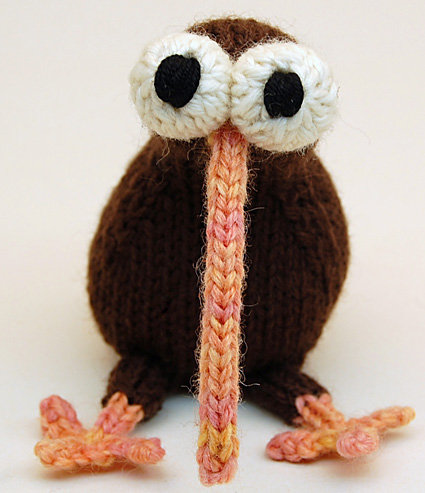
Your eyes would be bugging out too if you laid eggs one quarter of your own body weight! But despite the strain, Kiwis love each and every one of their little chicks. Kiwi is knit from the base of the body up to the tip of the beak. The eyeballs & legs are knit on stitches picked up from the body, or knit separately & sewn on. |
||

|
Tweet
|
|
|
SIZE |
|
|
FINISHED MEASUREMENTS |
|
MATERIALS Small green toy: Small brown toy: Large toy: Notions |
|
GAUGE |
Exact gauge is not important for this project; however, it is important to knit tightly to obtain a firm fabric so that stuffing does not show through. Use needles that are several sizes smaller than size recommended on ball band. |
|
PATTERN NOTES |
|
LLI (Left Lifted Increase): Use the left needle to pick up the stitch 2 rows below the last stitch on the right needle. Knit this stitch through its back loop. 1 stitch has been increased. Directions for the Knitted Cast On method (“knitting on”) can be found here. 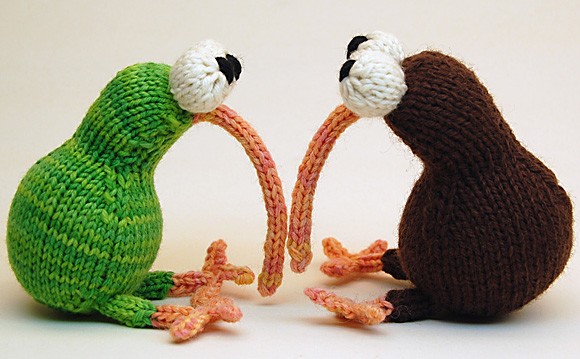
|
|
DIRECTIONS 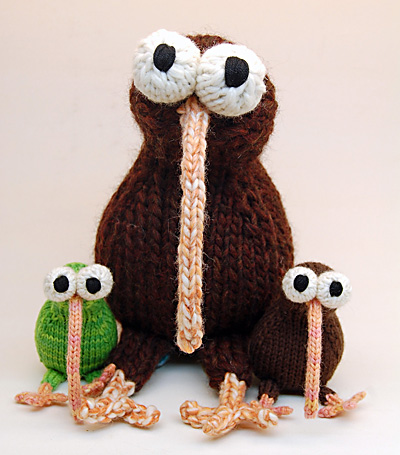
Using MC, CO 6 sts. Divide sts between needles and join to work in the round, being careful not to twist. After several rounds have been worked, place safety pin or split ring marker in work to indicate beginning of round. Round 1: [Kfb] in each st. 12 sts. Even-numbered Rounds 2-8: K all sts. Round 3: [Kfb] in each st. 24 sts. Round 5: [Kfb, k6, kfb] three times. 30 sts. Round 7: [Kfb, k8, kfb] three times. 36 sts. Round 9: [Kfb, k10, kfb] three times. 42 sts. Rounds 10-19: K all sts. Round 20: [Ssk, k10, k2tog] three times. 36 sts. Odd-numbered Rounds 21-25: K all sts. Round 22: [Ssk, k8, k2tog] three times. 30 sts. Round 24: [Ssk, k6, k2tog] three times. 24 sts. Round 26: [Ssk, k4, k2tog] three times. 18 sts. Round 27: K all sts. Head is shaped using short rows (see Abbreviations
+ Techniques). Before proceeding, sew up small hole at base of work and draw
yarn tail to inside of work. Stuff body. Break MC and stuff head. Using CC1, proceed as follows. If you
wish to make a firm beak for your kiwi, switch to a smaller needle
size. Transfer all sts to one needle. Work 25 rows I-cord, or until
beak is desired length. 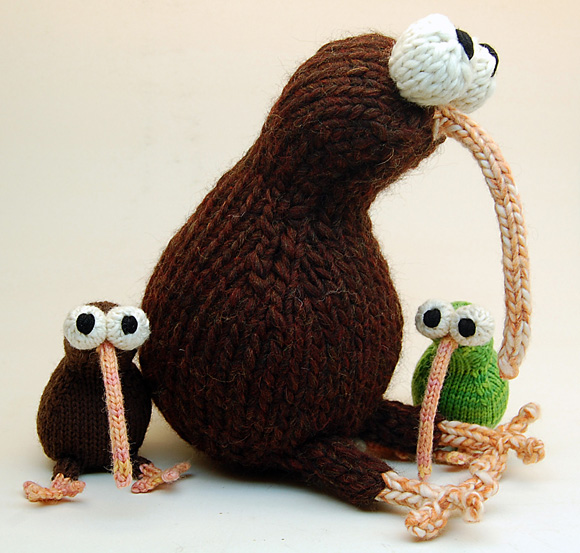
EYES Using CC2, pick up and k 8 sts in top of toy, in two parallel
rows as shown below. Eyes are worked in the round. 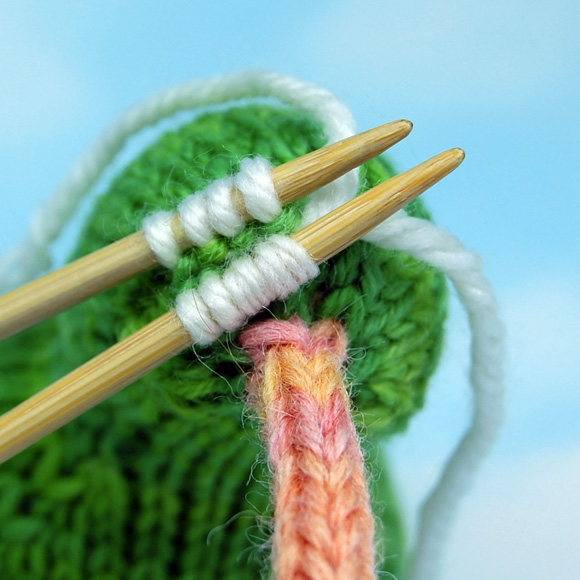
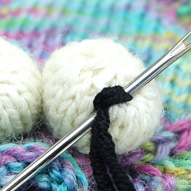 Round 2: [K1, LLI] eight times. 16 sts. Rounds 3-6: K all sts. Round 7: [Ssk] eight times. 8 sts. Break yarn and draw loosely through remaining sts. Stuff eye, then pull yarn tail tight to close. Weave in ends and make a second eye in the same way. Use black yarn or embroidery thread to embroider pupils as shown at right. LEGS 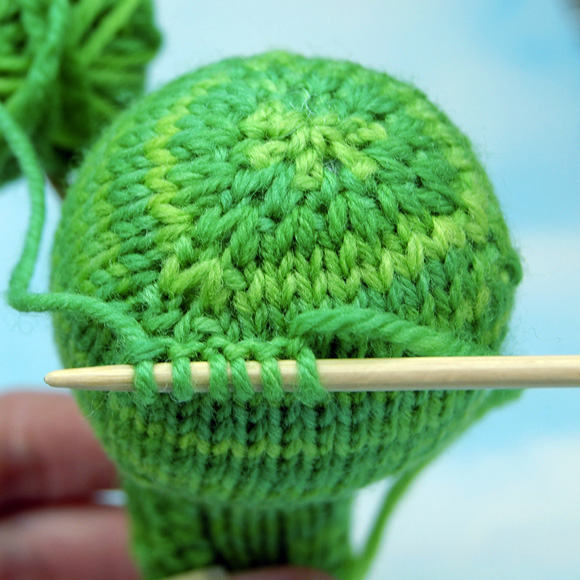
Using CC1, continue in I-cord as follows: Form feet by working picot bind off as follows. Use knitted
cast on method (see Pattern Notes). Work second leg in the same way. |
| ABOUT THE DESIGNER |
|
Cheezombie often finds herself bleary eyed and finger sore, but still knitting and watching slasher movies and cartoons, at 2 a.m. The byproducts of these late-night sessions fuel others, whereby creating a cycle of sleeplessness and creativity and funny critters. Knitting Manifesto: |
|
Pattern & images © 2011 cheezombie. Contact Cheezombie |